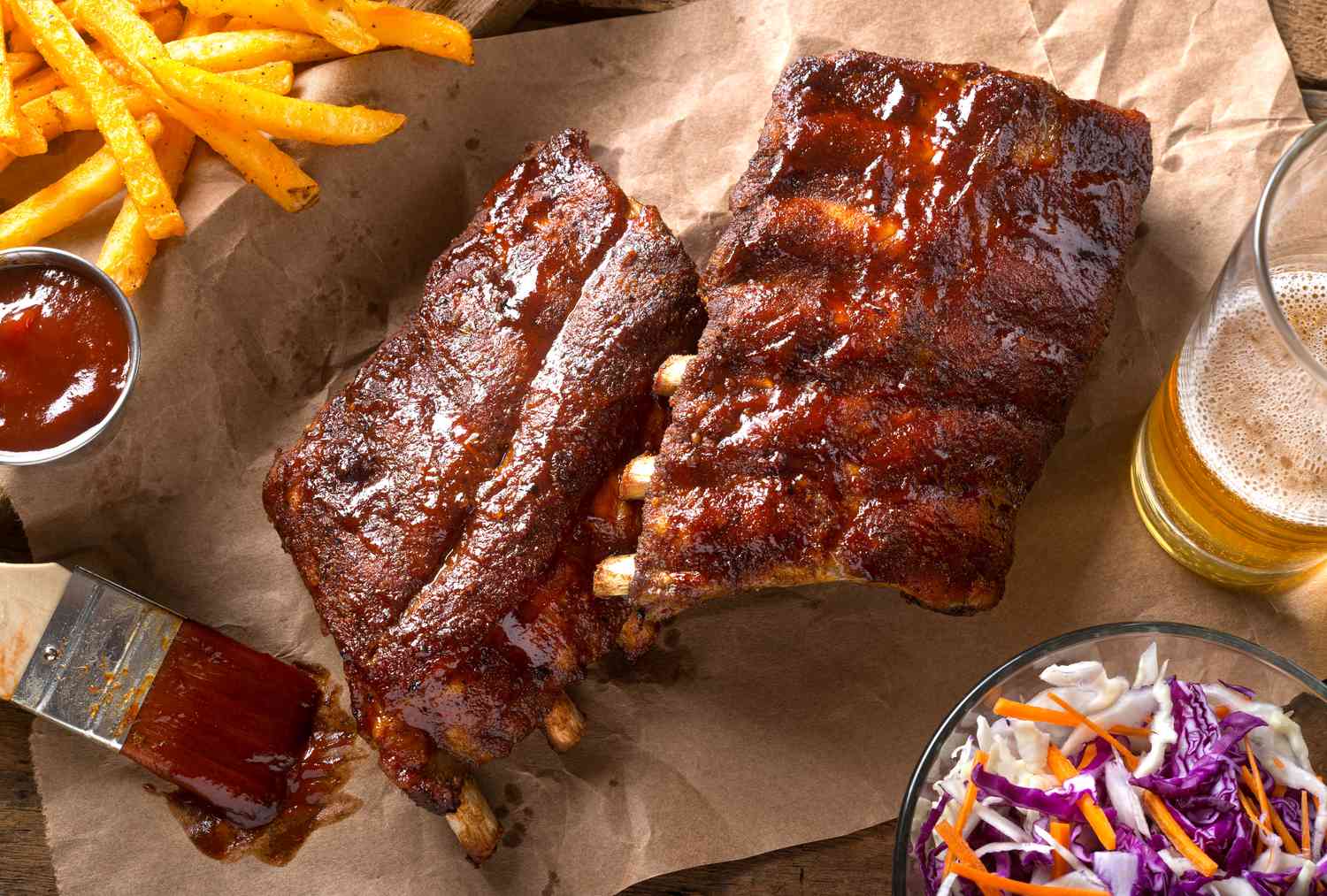Perhaps made (extra) famous by at least one restaurant jingle, ribs get a lot of love. But ribs can be just as tasty. So says Sean Flynn, a former butcher who is now sales director of Niman Ranch, a network of more than 600 family farms and ranchers raising beef, pork and lamb.
“You'll get great flavors either way,” says Flynn. “The ribs come from the loin section where you get your pork chops. This meat really tends to be very tender and a little leaner. Whereas ribs, being closer to the belly, tend to be a little fattier and have a lot of flavor.
The difference between ribs and short ribs
Spare ribs and baby back ribs come from the same pork ribs. Babies' backs arise from the section of the rib cage closest to the spine, and the replacement ribs are an extension of these ribs, further away from the spine.
Baby backs have a rounder shape, while baby back ribs, also called St. Louis ribs, are flatter and longer. Ribs usually cost a little more at the grocery store than short ribs.
Barbecue restaurants tend to serve ribs most often. “I've seen restaurants stack them like Lincoln Logs,” Flynn says. “They tend to put on a nice display. For the price you pay, the flavor is fantastic.
Because ribs are leaner, they can dry out more quickly if you cook them too long. Ribs offer more of what Flynn calls an insurance policy. You have a little more leeway with the temperature and how long you can cook them before they dry out.
“I grew up eating ribs and I started them low and slow on the grill, then spiced them up at the end and then drizzled them with barbecue sauce,” he says. Now he's turning his attention to ribs. “I like to cook with cuts that are underrated and (have) good value for money.”
He points out that as the number of recreational smokers has grown, ribs have become more popular. Sometimes fine-dining restaurants offer a frozen, sticky spare rib on the appetizer menu.
“Some people love ribs because, when cooked properly, they will have a very tender bite and they can be very meaty. Some people like having to gnaw them down to the bone,” says Flynn. “Ribs are cooked at a higher temperature and that really breaks down a lot of collagen and connective tissue, and then you end up with this finished product that falls off the bone. »
Simple recipes / Brent Hofacker
How to Cook Ribs or Spare Ribs
Both types of ribs can be grilled or roasted. The big difference is how long you need to cook them.
Because baby backs are leaner, the meat can dry out. The texture of the ribs will be chewy if you don't cook them long enough. Ribs require a little more time. Flynn says that for a rack of ribs, you'll want the internal temperature to be around 195°F to 200°F. For ribs, aim for an internal temperature of 145°F.
Although Flynn prefers to use a dry rub, he suggests glazing the ribs on the grill when you're done cooking them to add moisture and flavor. When you remove them from the grill, let them rest so all their juiciness can release into the meat.
“Let them rest, depending on how hungry your guests are, at least 10 minutes,” says Flynn. “But more is better!”




